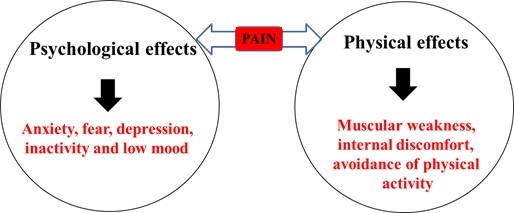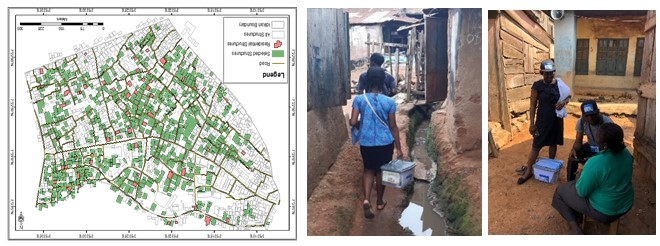NEWSCAST SERIES
PREVALENCE AND DETERMINANTS OF ORAL HEALTH CONDITIONS AND TREATMENT NEEDS AMONG SLUM AND NON-SLUM URBAN RESIDENTS: EVIDENCE FROM NIGERIA
Published on: 23rd September, 2022.
Oral health is a well-recognized key component of the overall health and well-being, yet, suffers neglect in healthcare planning among Low and Middle-Income Countries (LMICs). Oral disease constitutes a silent epidemic, especially among disadvantaged populations such as those living in the slums of LMICs. Slums are characterized by crowded, unhealthy places with a high risk of infection and injury while the residents are often marginalized and have limited access to basic services. Slum settlements provide homes for about 1 billion world population and in Nigeria, the population is estimated to be almost half of the entire country. While research points to a higher general disease burden among slum dwellers, compared to their non-slum urban or rural counterparts, little knowledge exists about the slum dwellers' oral disease burden. An understanding of oral disease distribution and severity in different settings can aid the planning of appropriate intervention strategies.
OXIDATIVE STRESS INDICES IN ASD CHILDREN IN SUB-SAHARA AFRICA
Published on: 11th March, 2022.
Autism spectrum disorder (ASD), is a heterogeneous group of neurodevelopmental disorders characterized by impairments in verbal and non-verbal expressive speech, deficits in social interaction and hyper-focused repetitive behaviors from childhood. Although the prevalence of the disorder is increasing globally, the causes and pathophysiology of ASD are not fully understood. There is a general agreement that ASD could result from interaction between genetic and environmental factors with oxidative stress as a potential link. Hence, development of oxidative stress especially in the formative years of children has equally gained prominence as the basis of the disorder. Oxidative stress determined by imbalance in oxidant/antioxidant ratio was investigated in children clinically diagnosed for ASD (cases) according to DSM-IV-TR and neuro-typical children (controls). We also determined levels of essential metals [magnesium, zinc, and copper] and toxic metal, lead in the cohort. We found an imbalance of oxidant/antioxidant system causing production of reactive oxygen species (a highly destructively group of free radicals) in the children with ASD compared to the control group. This may be very significant as a precipitating agent of structural damage and attendant disruption in transduction and transmission of signals across neurons especially in sensitive organs like the brain in the developing child. Findings in this work underscore the need for optimal intake of Zn and Mg especially by pregnant women in order to mitigate consequent damages to sensitive organs like the brain in the developing child.
Read more: OXIDATIVE STRESS INDICES IN ASD CHILDREN IN SUB-SAHARA AFRICA
PRIMARY STROKE PREVENTION WORLDWIDE: TRANSLATING EVIDENCE INTO ACTION
Published on: 8th January, 2022
Stroke is the second leading cause of death globally and is a huge public health burden of growing importance.
In 2011, the UN resolution and the WHO Global NCD Action Plan 2013–2030 called on all governments to give primary prevention of non-communicable diseases, including stroke, the highest priority of all diseases.
This health policy publication presented an assessment of the state of stroke prevention services globally including a systematic review of primary prevention strategies and current guidelines. The authors evaluated the economic implication of stroke, enumerated gaps in primary stroke prevention, and provided novel evidence-based pragmatic solutions within a cost framework that policy makers can use to reduce the burden of stroke across the globe, especially in low and middle income countries (LMICs).
Read more: PRIMARY STROKE PREVENTION WORLDWIDE: TRANSLATING EVIDENCE INTO ACTION
MULTIPLE EXPANSIONS OF GLOBALLY UNCOMMON SARS-COV-2 LINEAGES IN NIGERIA
Published on: 4th February, 2022.
In the wake of the coronavirus disease (COVID-19) pandemic, the authors (Ozer… Adewumi et al., 2022), here identified and longitudinally monitored the circulating variants of the etiologic agent, severe acute respiratory syndrome coronavirus 2 (SARS-CoV-2) in Nigeria using genomic surveillance and molecular analysis techniques. We reported sequences from 378 SARS-CoV-2 isolates collected in Oyo State, Nigeria between July 2020 and August 2021. Prior to our submission, Nigeria had a total of only 856 sequences in the GISAID database, thus our submissions increased reporting by nearly 50%.
Read more: MULTIPLE EXPANSIONS OF GLOBALLY UNCOMMON SARS-COV-2 LINEAGES IN NIGERIA
AMILORIDE ANTAGONIZES BEHAVIOURAL RESPONSES IN A ZEBRAFISH-BASED PAIN MODEL
Published on: 8th January, 2022
Pain is an unpleasant sensory and emotional experience due to real or possible tissue injury. It is a serious biomedical condition that reduces human activity. Several factors can cause pain. Normally, the human body maintains a healthy balance of alkalinity and acidity. However, increased tissue acidity due to some physiological practices related to excessive sportive exercise and consumption of high acid foods and drinks can cause pain by triggering acid-sensing ion channels (ASICs). Also, inadequate blood flow necessary for the metabolic activities can cause tissue acidity. Some signs and symptoms of pain in people include, but are not limited to, twisting or constant shifting in bed, groaning, moaning, whimpering, frowning, uneasy and tense appearance, agitation and restlessness. There is paucity of information on the involvement of ASICs in pain-like behaviors. To investigate this, zebrafish were pretreated via injection with amiloride, a drug that prevents excessive loss of potassium in the body and a potent ASIC inhibitor, at 0, 0.25, 0.5, 1.0, and 2.0 mg/mL before injection of 2.5% acetic acid to induce pain. The technique is novel and better than others because it is fast, no chemical anesthesia is required and allows for immediate assessment of the swimming activity of fish when returned to the water.

The novel findings herein showed that inhibition of ASICs with the tested doses of amiloride, considerably abated specific behavioural responses associated with pain in zebrafish model. Fortunately, ASICs in zebrafish is about 75% similar to human and rodent counterparts. Thus, our data evidenced ASICs as a therapeutic target as well as support the utility of zebrafish-based models in translational pain research. It is therefore recommended that moderate exercise and consumption of acid-rich diets that will not activate ASICs to induce pain are essential for an optimal healthy status.

Dr. Isaac A. Adedara is a Senior Lecturer in the Department of Biochemistry and the current Sub-Dean (Undergraduate), Faculty of Basic Medical Sciences, University of Ibadan. He obtained the Bachelor of Science (B.Sc.), Master of Science (M.Sc.) and Doctor of Philosophy (PhD) in Biochemistry from the University of Ibadan in 2001, 2004 and 2011, respectively. He was a recipient of the prestigious Indian National Science Academy-Jehangir R.D. Tata (INSA-JRD TATA) and the John D. and Catherine T. MacArthur Foundation Fellowships (USA) during his doctoral research programme. Dr. Adedara had his Postdoctoral training at the Auburn University, Auburn, USA and the Federal University of Santa Maria, Brazil. He uses a wide range of contemporary and molecular biology tools including, but not limited to, spectrophotometric enzyme assays, western blotting and enzyme-linked immunosorbent assay to elucidate the molecular mechanisms of action of toxic compounds which have added to the body of knowledge in biomedical research. Dr. Adedara’s area of expertise is toxicology and has published more than 100 research papers in reputable international peer-reviewed journals. He is an editorial board member of the Journal of Biochemical and Molecular Toxicology (USA). He is currently a recipient of the prestigious “Young Talent with Experience Abroad Scholarship” from the Federal Government of Brazil to participate in the project entitled “Pharmacological and nutritional strategies for health promotion” with Professor Denis B. Rosemberg as his preceptor at the Federal University of Santa Maria, Brazil.
Read the full article at https://pubmed.ncbi.nlm.nih.gov/34499933
Newscast Series from the College of Medicine, University of Ibadan (CoMUI),
Translational Research & Community Impact Committee (TRaCC) 0003
TPL_G5_MORE_ARTICLES
Page 2 of 3





